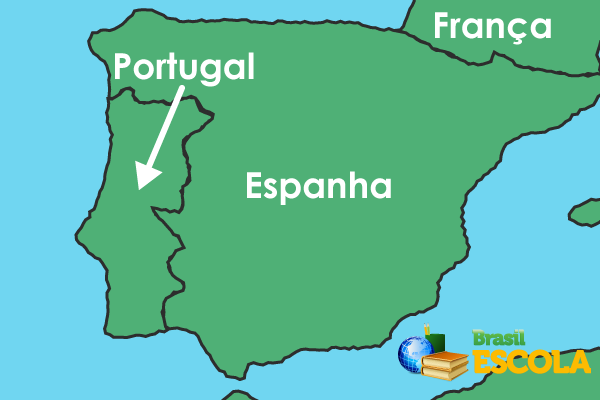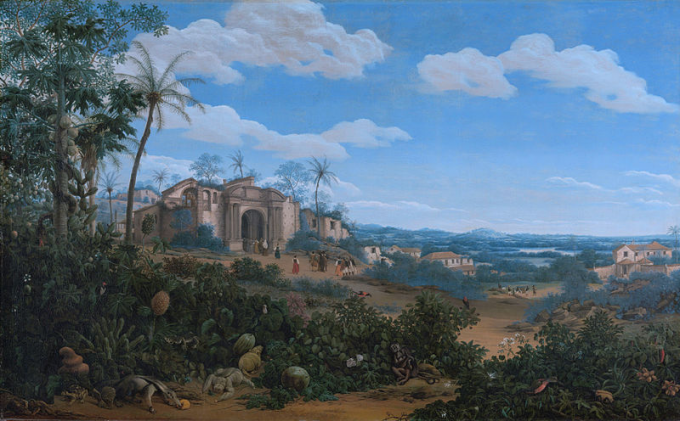THE Iberian Union it was the unification of the kingdoms of Spain and Portugal between 1580 and 1640. In this period, the Portuguese kingdom was under Spanish rule. With the death of King Dom Sebastião, who had no children, Portugal was left without a king. Alleging kinship with Dom Sebastião, the Spanish king Philip II invaded the Portuguese kingdom and annexed it to Spain.
This unification brought consequences for the American colonies, mainly in Brazil. The Dutch were enemies of the Spaniards, from whom they separated because of their independence, and took advantage of the unification of the two crowns to invade the Brazilian Northeast and master the techniques of sugar production.
Read too: Brazil wood – first raw material explored in the colony
Causes of the Iberian Union
The causes of the Iberian Union are related to the succession to the Portuguese throne. King Dom Sebastião died at the Battle of Alcácer-Quibir in 1578 and left no heir. Dom Henrique, great-uncle of Dom Sebastião, was crowned the new king of Portugal, but died two years later without also leaving any heirs. the king of Spain,
Dom Philip II, claiming kinship with King Dom Sebastião, assumed the Portuguese throne, annexing Portugal to Spanish territory.
Period of the Iberian Union
The Iberian Union took place from 1580 to 1640 and inserted itself in the context of the exploration of America by Portugal and Spain. Since signing the Treaty of Tordesillas, in 1494, that the Portuguese and Spaniards divided the American continent to explore it and meet the demands of the European market. The Spaniards got rich from the exploration of precious metals, while the Portuguese profited from the sale of sugar cane on the Brazilian coast.
Do not stop now... There's more after the advertising ;)
Iberian Union and the Dutch invasions
The conflicts between Spain and Holland had consequences in Brazil. Until the formation of the Iberian Union, the Portuguese maintained commercial relations with the Dutch. This proximity was broken shortly after Portugal was annexed by Spain. THE Dutch invasion in Brazil, it was one of the consequences of the union of the Iberian kingdoms.
The Netherlands aimed to gain control of sugar production and the slave trade. For this, the West India Company, which sought to occupy sugar-producing territories and control the slave trade. This company was financed with state and private capital.
The Dutch invasion of Brazil took place in two moments. In 1624, the Dutch attacked the capital, Salvador, and managed to land in the city. However, the invaders were unable to advance to the interior as a result of the actions of "men good", who knew the region and used guerrilla tactics, such as ambush, to attack the Dutchmen. In May of the following year, the Dutch were expelled from Salvador, which did not mean definitive defeat. In 1630, Holland began a new invasion of Brazil. The Dutch gained control of Recife and Olinda, remaining in the region until 1654.

The Dutch presence in Brazil was marked by the arrival of Mauritius of Nassau to Pernambuco. He was responsible for administering the Dutch territory in South America. Nassau sought to get closer to the planters by granting loans so that sugar production could be resumed.
Also, there was religious freedom, which motivated the coming of Dutch Jews to Brazil. The city of Recife was remodeled through the construction of bridges and canals, imitating the layout of Amsterdam. Nassau brought to Pernambuco a group of intellectuals to carry out the first natural studies in Brazil. painters like Frans Posts they also came to Recife and made the first drawings of Brazilian colonial life.
Maurício de Nassau stayed in Brazil until 1644, when he returned to Holland after disagreements with the West India Company. The departure of Nassau and the Portuguese reconquest triggered the conflicts that led to the definitive expulsion of the Dutch from Brazil.
See too:Inquisition in Brazil Colony – persecution of the colony's Jews and Protestants

End of the Iberian Union
In 1640, the Portuguese reestablished the autonomy of their kingdom, ending the union with Spain. started to Bragança dynasty with the coronation of Dom João IV as king of Portugal. The two emperors who ruled Brazil during the imperial period, Dom Pedro I and your son, Dom Pedro II, belong to that dynasty.
Consequences of the Iberian Union
Right after the end of the Iberian Union and the expulsion of the Dutch from the Brazilian Northeast, the sugar trade went into crisis. The Netherlands learned the techniques of sugarcane cultivation and started to plant it in the Antilles. Thus, the Dutch became strong competitors of sugar produced in Brazil.
The Portuguese did not have the financial conditions to face the competition because of the war for the restoration of their throne and also for the reconstruction of the mills destroyed in the clashes that resulted in the end of the Dutch rule in the Brazil.
Another consequence was the formation of expeditions to explore the Brazilian hinterland. Until the end of the 16th century, settlers were concentrated on the coast. The Iberian Union promoted the suspension of the Treaty of Tordesillas and this motivated the search for precious metals. After the expulsion of the Dutch and the economic crisis that followed, the Portuguese crown invested in these expeditions through the Brazilian interior. The entrances and the flags.
Summary on the Iberian Union
Iberian Union was the union of the Portuguese and Spanish kingdoms from 1580 to 1640.
Conflicts between Spaniards and Dutch.
Dutch invasion of Brazil: Salvador (1624) and Pernambuco (1630). The Dutch sought to gain control over sugar production and the slave trade.
End of the Iberian Union and expulsion of the Dutch: restoration of the Portuguese kingdom by the Bragança Dynasty and the sugar crisis (competition with the Netherlands).
solved exercises
question 1 —The Iberian Union had direct consequences for the organization of Brazil Colony. Check the alternative that correctly points out these consequences.
A) War between colonists and Spaniards for the independence of Brazil.
B) End of the Treaty of Tordesillas and Dutch invasion.
C) The Dutch went to war against the Spaniards to end slavery in Brazil.
D) Spain organized a policy of occupation of Brazil.
Resolution
Alternative C. The Iberian Union promoted the unification of the kingdoms of Portugal and Spain. With this, the existence of the Treaty of Tordesillas no longer made sense, considering that, from now on, only the Spanish kingdom existed. The Dutch invasion of Brazil is associated with the search for control of sugar production and the slave trade, as well as conflicts with Spain in the 17th century.
question 2 —The Dutch invaded Pernambuco in 1630 and settled in the region. Check the alternative below that correctly mentions the name of the Dutch administrator who governed Pernambuco.
A) Mauritius of Nassau
B) Dom João VI
C) William of Orange
D) John Calvin
Resolution
Alternative A. Maurício de Nassau was responsible for the most stable period of the Dutch presence in Brazil. He sought to approach the planters through the granting of loans; he remodeled Recife after the city of Amsterdam and guaranteed religious freedom.
Image credit
[1]Lais Castro / commons
By Carlos César Higa
History teacher


